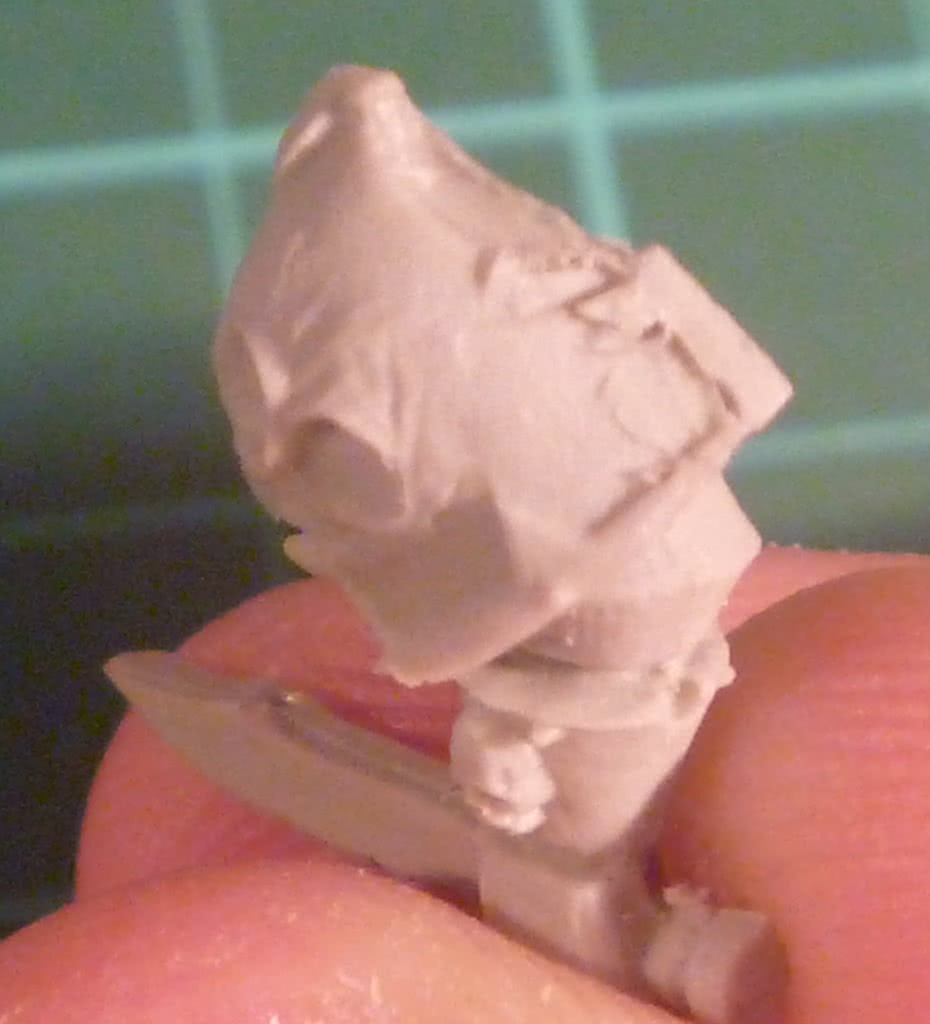Book Review: Grey Knights (book 1)

While you can find now the three Grey Knights books in one Omnibus compilation, I will do individual reviews as I read each book independantly, starting with the first one today.
The Grey Knights are a special chapter of Space Marines, created to fight with daemons and chaos forces, and led by the Inquisition (they act as the Inquisition military arm).
In this book they will hunt for informaton about how to stop the summoning of a terrible chaos daemon that was banished one thousand years ago and is coming back.
Well written, with a nice plot and good characters, thrilling, and with plot twists. Apart from depicting the GKs as ultra-religious and awesome in combat (as they should be in theory), their foes are nicely presented, detailed and suited for the story told. A good representation of chaos and cultists.
If you want to learn more about the Grey Knights definetly a good action book.
Tags: Books Warhammer 40000
When Warhammer 40k Necrons really appeared?
Necrons are an enigmatic and really appealing race, both in how the miniatures look (frightening killing machines without remorse nor pity for the other races) but also due to their background, so I try to read as much as possible about everything related to them.
One curious point that only adds more mystery to them is when Games Workshop really created the Necrons.
Sources say that in 1998 the first miniatures appeared (Necron Raiders), then getting a full army treatment after releasing the third edition of the main game.
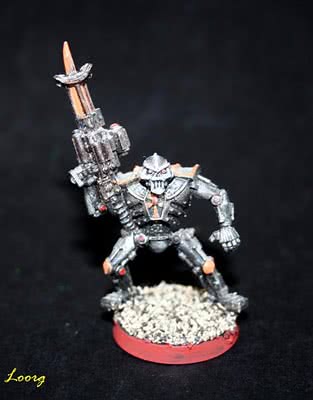
Old Necron Raiders, from Mis Olvidadas Figuras

Actual necron miniatures
But, being an old dog like I am, introduced to "RPGs" at an early age because of HeroQuest, I was trying to remember why those Necrons were familiar to me from earier...
And then I remembered: Space Crusade (aka Star Quest in some countries) was my second boardgame, and was also done by Games Workshop to introduce the Warhammer 40k world to new players (and then try to move them to proper fields with the normal miniatures and games). Exactly like Heroquest but for the futuristic setting.
I won't enter into details because you can just navigate to the wikipedia link and read by yourself, but I will point out one date: 1990. The date where it was released.
And now, look at how one of the most dreaded monsters the game had looks, the so called "Androids":
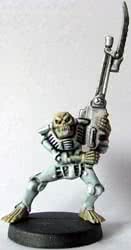
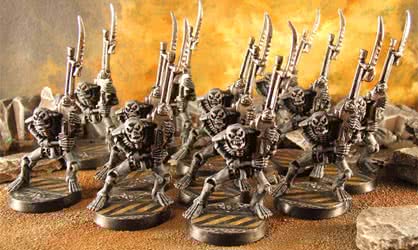
Space Crusade painted Android miniatures,from the great Zen StarQuest
Don't you agree with me that the similarities are more than noticeable? Excepting the glowing energy bar in the weapon... looks like almost the same model!
We are talking about 8 years before the official first appearance (in a White Dwarf).
It looks quite reasonable to think that GW first thought of a futuristic, alien version of the undead skeletons back in 1990 (probably early while designing the game), and when they wanted to create a new race around 1997 they just went back and redefined the "Androids" (and gave them a better name).
Book Review: Deathwatch 2: Warrior Coven
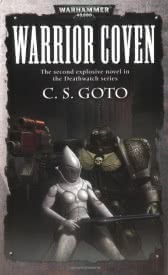
Second book about the Deathwatch, this time sending a Deathwatch team to deal with a secret coven between the Inquisition and the Eldar. Of course problems will arise when incidentally the Eldar are suffering attacks from the Dark Eldar.
I actually enjoyed this book a lot. Unlike the predecessor the plot is elaborate and my cons are only related with background (once again) and some plot "convenient situations" unlikely to happen.
C. S. Goto keeps using minor chapters and the Blood Ravens as main ones, but you can easily forgive about it (except for the librarian's "special powers").
Some of the Dark Eldar background (sadistic culture and mixture of lust and masochism) is well represented, and the Space Marines have an additional problem: Dealing with enemies (Eldar) by their duty when they hate them.
Also has nice unexpected plot changes that keep you reading on and on.
Tags: Books Warhammer 40000
Book Review: Deathwatch: Warrior Brood
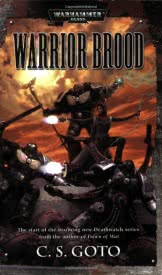
Warrior Brood is the first book related to the Deathwatch (elite Space Marines picked from all chapters to work for the inquisition in small kill-teams), written by the apparently infamous C. S. Goto.
And well, while the book delivers action, you must indeed have to allow quite a few mistakes, inconsistencies (with the Warhammer 40k world) and in general inventions of the author.
Some units are wrongly described (Tyranids mostly); others have new ultra-powerful habilities not found in the game; Space Marines appear to be really weak in general...
The book relates a Deathwatch detachment sent to a sector under attack from a Tyranid hive fleet, but where some things are not as simple as they seem.
A dumb successor chapter is introduced, and some Deathwatch marines are from lesser chapters or directly from the Blood Ravens (coincidence that this author wrote the book Dawn of War, based on the videogame that invented this chapter). Allows for some specific argumental decisions but in general I miss more realistic chapters.
As I said the pacing is quite good, you won't miss action and if you forgive the heresies related to WH40k lore, the book is not a bad reading, but neither impressive.
Tags: Books Warhammer 40000
Citadel Finecraft,or should I Say Citadel Finecrap
The first Citadel Finecraft miniatures I have are some Chaos plague space marines. Today I decided to relax and assemble them, and also check how impressive or not was the resin replacement of metal Games Workshop miniatures.
I had read all kind of comments, from not bad to terrible, and seen some frightening photos that scared me. My results? I thank I had the miniatures via a good online sale (so my mind cand "compensate"), but is a pity I didn't buy them in a physical store in Spain, because I would have returned them due to the quality.
I cannot imagine how can they in some cases even raise prices to sell this crappy resin models and not feel embarrased. Surely the resin has detail and quality, but only in those places where it doesn't have bubble holes.
Let me show you some photos:
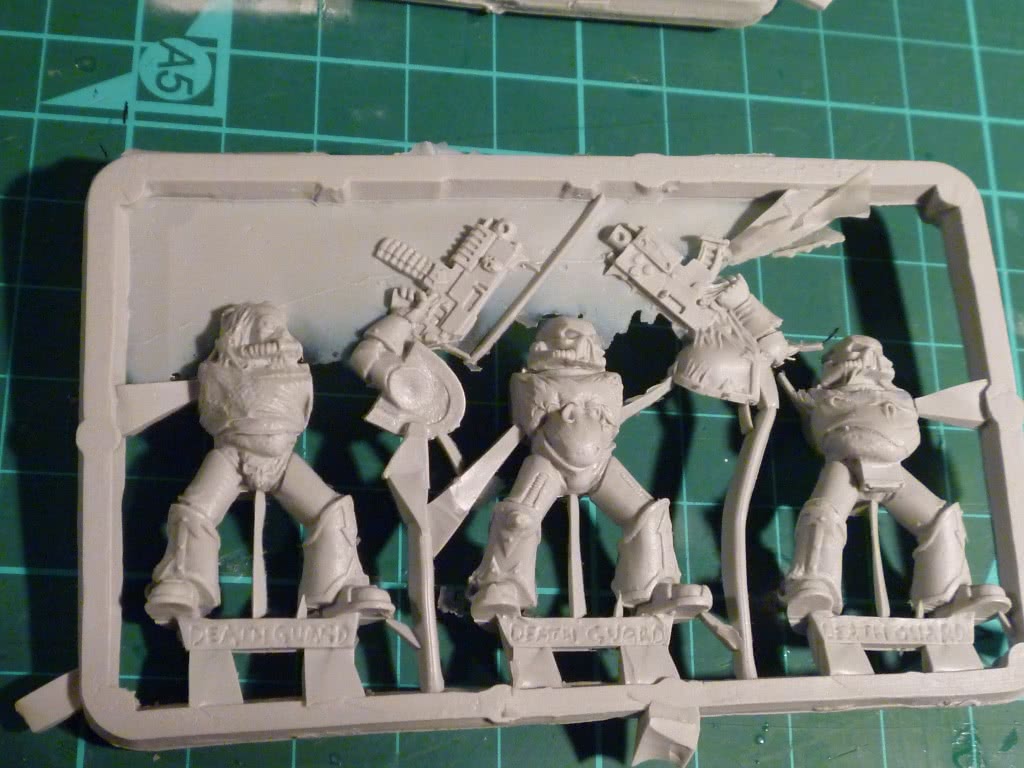
Sure you can take out the fine layer of resin from the models, but WTF?! Plastic sprues are way better cut than this "finecast" ones!
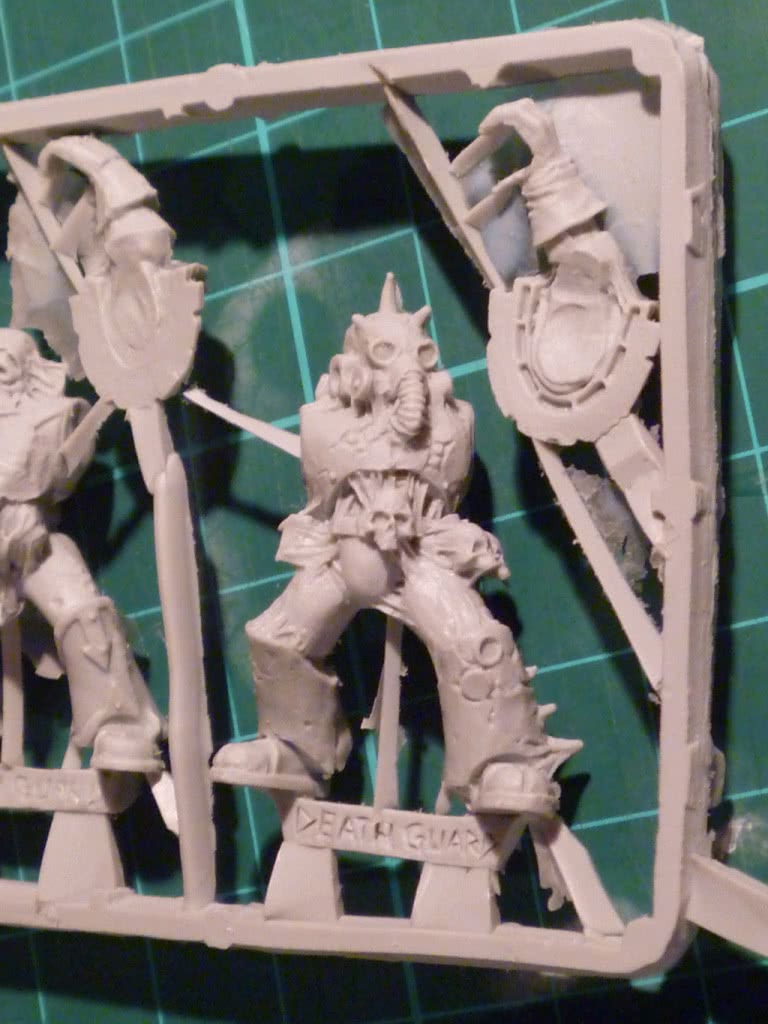
Three sprues had the thin layer. Also in general al pieces have tons of remains to cut. In general looks like plastic sprues but less professional.
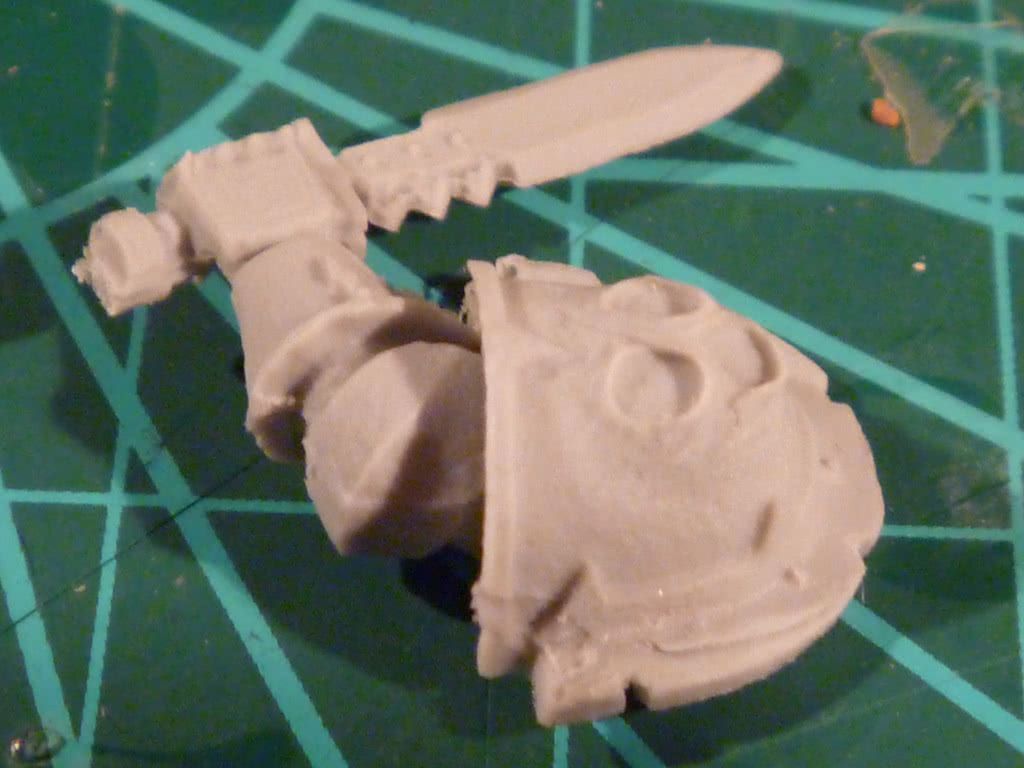
Almost every single piece needed retouches to remove the border of the molds (look at the elbow or the wrist gauntlet). In some places even more noticeable than plastic sprues.
And now come the fireworks... the now famous GW resin bubble holes. I wanted to think that the photos I saw were an isolated uncommon case, but the truth is that the bubble holes are directly defects, requiring green putty and not "a drop of glue" as GW says.
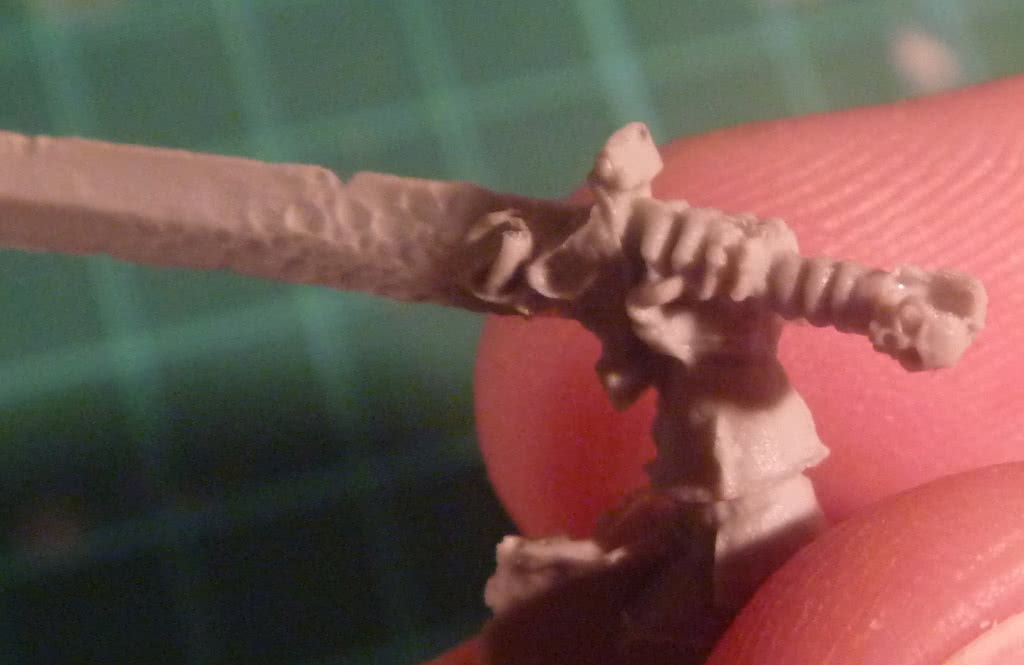
Look at the skull in the sword hilt. The hole is inmense and clearly visible.

You can find the bubble holes because they usually have like a shiny liquid (but is dry). Note that the hand also has another bubble hole.
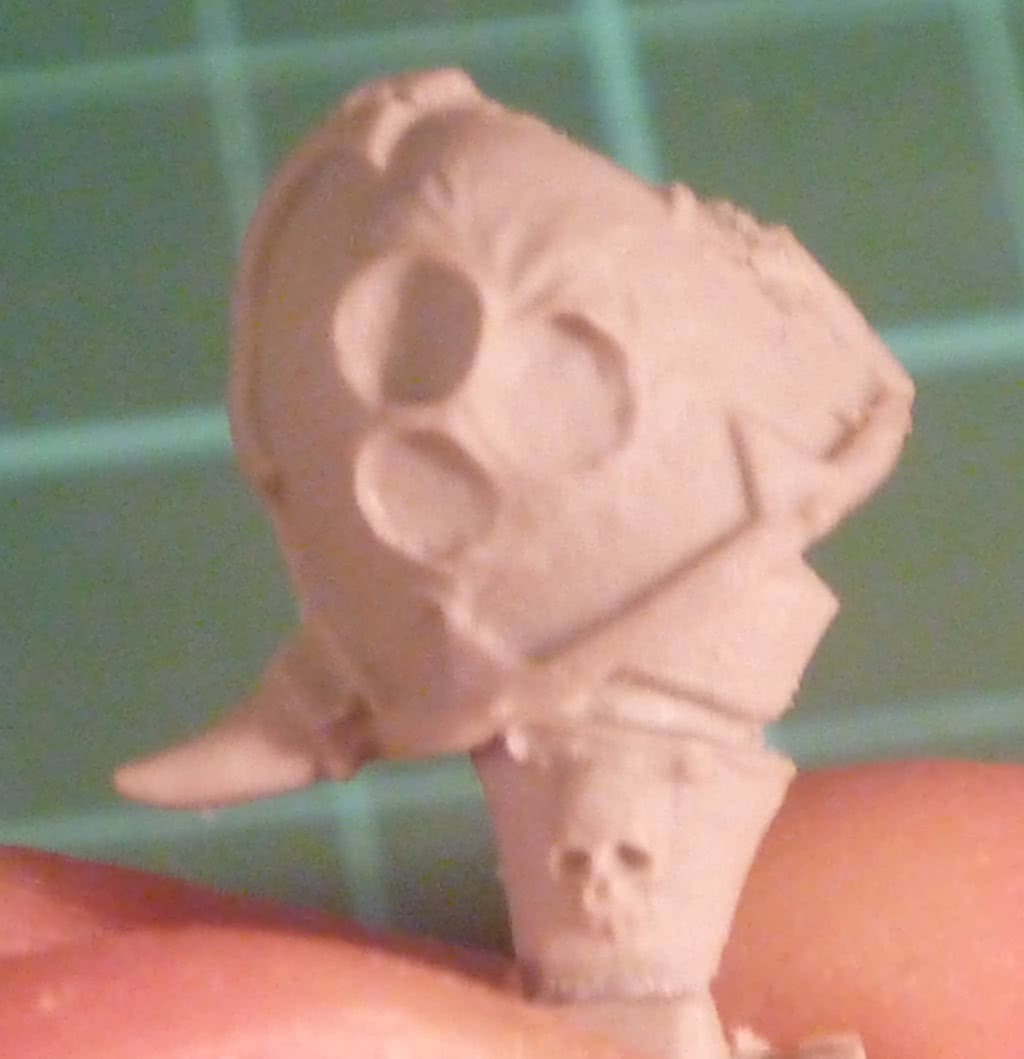
Another broken piece, the upper right corner of this shoulder pad. Small bubbles you say?
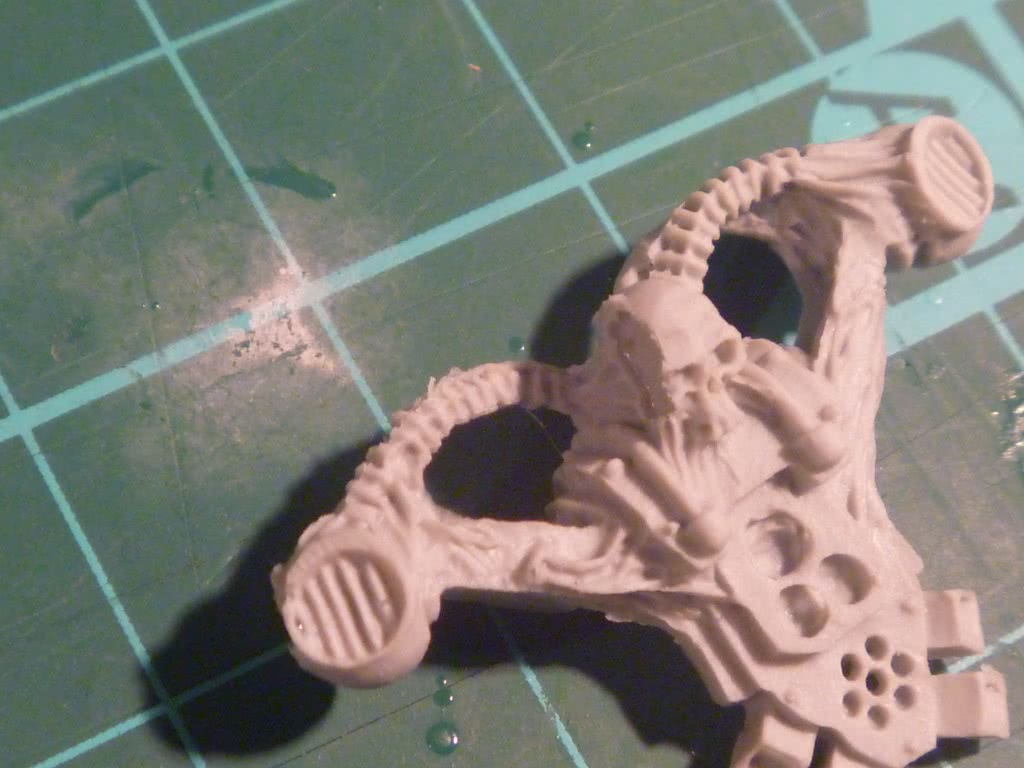
The only resin backpack... and the skull has also a hole on the left part...
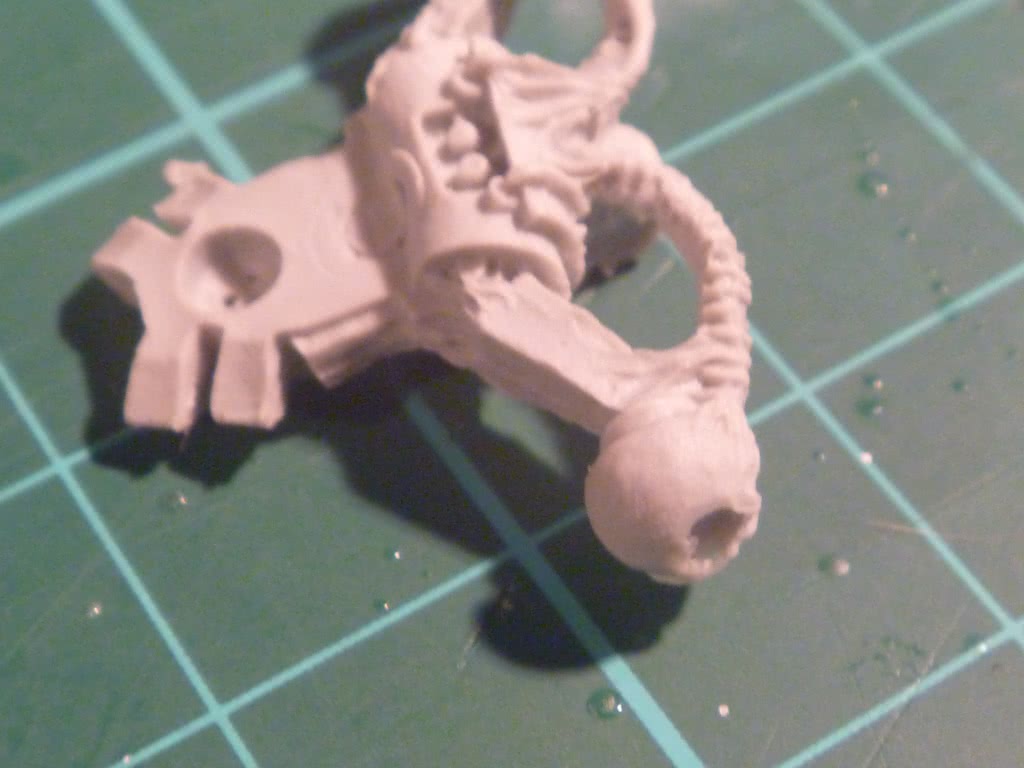
Plus another hole in the left part.
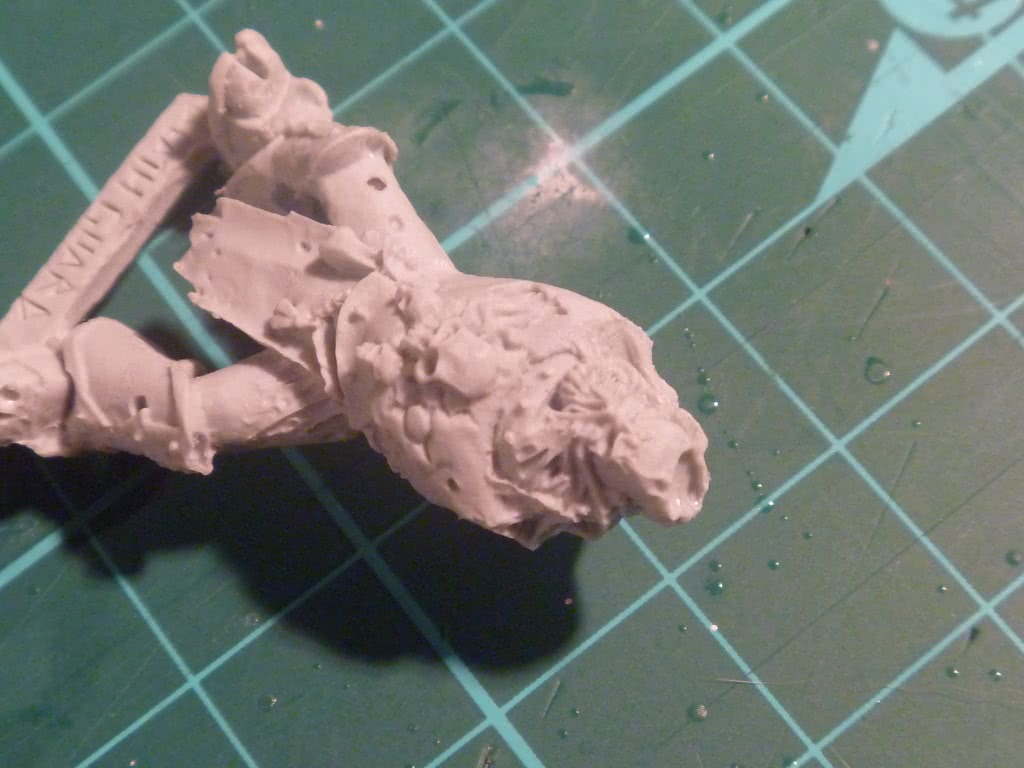
And the one that got me most angry about: One of the heads of the space marines had also a hole!
I always approach miniature assembly as a Zen-like ritual. In this case, I was frightened about what would be the next defect and if I could fix it or not.
I spent 30 minutes with green stuff fixing everything (and I hope my poor skills are enough once painted), fixing huge defects, not tiny bubbles.
My advice? Wait until this first generation of faulty Finecrapt resin models goes away and Games Workshop fixes their machines. In the meanwhile, buy "old" metal miniatures.
And if you must buy resin ones, buy them in a physical store so that you can return them in case of this kind of defects.
I am puzzled how if they also own Forge World (which produces resin models and I don't read complains against them) and they had he technology of quality resin models since years, they messed up so much .
Tags: Miniatures Warhammer 40000
- ← Newer Articles Page 17 / 25 Older Articles →
